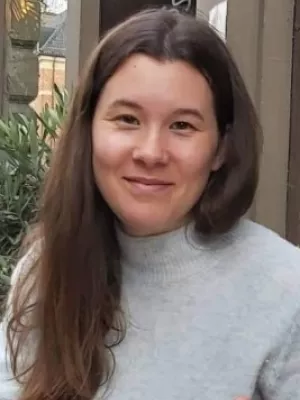
Malin Hjärtström
Doktorand

Noninvasive Staging of Lymph Node Status in Breast Cancer Using Machine Learning : External Validation and Further Model Development
Författare
Summary, in English
Background: Most patients diagnosed with breast cancer present with a node-negative disease. Sentinel lymph node biopsy (SLNB) is routinely used for axillary staging, leaving patients with healthy axillary lymph nodes without therapeutic effects but at risk of morbidities from the intervention. Numerous studies have developed nodal status prediction models for noninvasive axillary staging using postoperative data or imaging features that are not part of the diagnostic workup. Lymphovascular invasion (LVI) is a top-ranked predictor of nodal metastasis; however, its preoperative assessment is challenging. Objective: This paper aimed to externally validate a multilayer perceptron (MLP) model for noninvasive lymph node staging (NILS) in a large population-based cohort (n=18,633) and develop a new MLP in the same cohort. Data were extracted from the Swedish National Quality Register for Breast Cancer (NKBC, 2014-2017), comprising only routinely and preoperatively available documented clinicopathological variables. A secondary aim was to develop and validate an LVI MLP for imputation of missing LVI status to increase the preoperative feasibility of the original NILS model. Methods: Three nonoverlapping cohorts were used for model development and validation. A total of 4 MLPs for nodal status and 1 LVI MLP were developed using 11 to 12 routinely available predictors. Three nodal status models were used to account for the different availabilities of LVI status in the cohorts and external validation in NKBC. The fourth nodal status model was developed for 80% (14,906/18,663) of NKBC cases and validated in the remaining 20% (3727/18,663). Three alternatives for imputation of LVI status were compared. The discriminatory capacity was evaluated using the validation area under the receiver operating characteristics curve (AUC) in 3 of the nodal status models. The clinical feasibility of the models was evaluated using calibration and decision curve analyses. Results: External validation of the original NILS model was performed in NKBC (AUC 0.699, 95% CI 0.690-0.708) with good calibration and the potential of sparing 16% of patients with node-negative disease from SLNB. The LVI model was externally validated (AUC 0.747, 95% CI 0.694-0.799) with good calibration but did not improve the discriminatory performance of the nodal status models. A new nodal status model was developed in NKBC without information on LVI (AUC 0.709, 95% CI: 0.688-0.729), with excellent calibration in the holdout internal validation cohort, resulting in the potential omission of 24% of patients from unnecessary SLNBs. Conclusions: The NILS model was externally validated in NKBC, where the imputation of LVI status did not improve the model’s discriminatory performance. A new nodal status model demonstrated the feasibility of using register data comprising only the variables available in the preoperative setting for NILS using machine learning. Future steps include ongoing preoperative validation of the NILS model and extending the model with, for example, mammography images.
Avdelning/ar
- Bröstcancerbehandling
- LUCC: Lunds universitets cancercentrum
- Bröstcancerkirurgi
- Individuell Bröstcancerbehandling
- The Liquid Biopsy och Tumörprogression i Bröstcancer
- Bröstcancer - prevention & intervention
- Bröstcancer
- Anestesiologi och intensivvård
- Kirurgi, Lund
Publiceringsår
2023-01
Språk
Engelska
Publikation/Tidskrift/Serie
JMIR Cancer
Volym
9
Issue
1
Dokumenttyp
Artikel i tidskrift
Förlag
JMIR Publications Inc.
Ämne
- Cancer and Oncology
Nyckelord
- breast cancer
- breast neoplasm
- cancer
- diagnostic
- feasibility
- lymph node
- machine learning
- mammography images
- MLP
- model development
- multilayer perceptron
- NILS
- noninvasive lymph node staging
- prediction model
- register data
- sentinel lymph node biopsy
- SLNB
- therapeutic
- validation study
Status
Published
Forskningsgrupp
- Breast Cancer Surgery
- Personalized Breast Cancer Treatment
- The Liquid Biopsy and Tumor Progression in Breast Cancer
- Breast cancer prevention & intervention
- Anaesthesiology and Intensive Care Medicine
ISBN/ISSN/Övrigt
- ISSN: 2369-1999